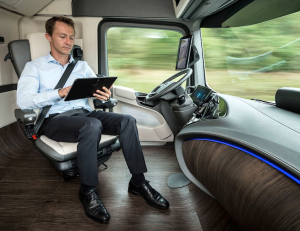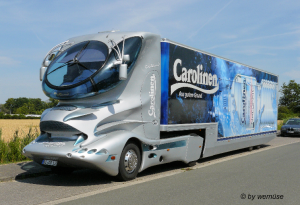According to the American Trucking Association, the US is currently experiencing a truck driver shortage of epic proportions. We are currently short 25,000 truck drivers. This shortage is expected to grow to 240,000 by 2020.
There are three possible solutions to the driver shortage: drones, self-driving trucks, and trains. All have tremendous potential. But can they really deliver to the final mile? If so, at what cost?
Drones
Amazon is working on drone delivery. In case you haven’t seen it, check out this video:
https://www.youtube.com/watch?v=98BIu9dpwHUWhen I watched the video, I immediately noticed a few things:
- It’s fast. But do I really need a product that quickly? If I do, am I willing to pay top dollar for delivery? Is it less expensive to use Uber, Lyft, or a hotshot courier company?
- It’s small. It might tide me over if I’m out of toner, or need a couple of diapers, but I’m going to have to go to the store or preplan an order if I need large quantities.
- It’s loud. I already live near one of the world’s biggest airports, DFW, and peak traffic time isn’t fun. Do we really want more noise pollution?
- Is it safe? Amazon would be more persuasive if it showed drones taking off from the roof, instead of from inside a warehouse. Plus, what happens if a drone crashes? This could be as catastrophic as a truck accident.
- Is it reliable? Can drones fly in inclement weather?
Self-Driving Trucks
Daimler is working on “Future Truck 2025”, a self-driving truck that they plan to launch in 2025. The premise of Future Truck is that a self-driving truck is safer and more reliable than humans. Plus, with Future Truck the driver becomes a “Transport Manager”. It’s just like piloting a plane. The Transport Manager gets the truck onto the highway, and then it goes on autopilot. Future Truck alerts the Transport Manager if it’s time to get off the highway or encounters construction or a traffic jam. So, with Future Truck we still need a human. The clever part is that that human gets more rest while on duty, so the current DOT Hours of Service regulations can be maximized.
The Netherlands is taking this concept a step further. A consortium consisting of government agencies and private research companies is working on self-driving trucks that don’t require human interaction to move freight from the Port of Rotterdam to nearby cities. The government plans to bring this technology to market in just 5 years. Still, questions remain:
- Can these trucks really deliver product to the final mile? Or will they just deliver from the port to a consolidation center?
- Are these vehicles truly autonomous? There’s an old joke about how over-the-road drivers are unbelievably good at operating vehicles – until someone asks them to back up.
- Will cost savings be passed onto consumers, or will they be used to offset the cost of infrastructure development?
Trains
Trains are the most efficient way to move freight across the US. We have an admirable rail system, but little of it is suitable for high-speed transport. This means that rail shipments often take at least 3 days to transport. And unless a customer has a rail door trains can’t deliver to the final mile.
Perhaps this rig can be modified for intermodal transport and outfitted to drive itself in Rotterdam.
Drivers
At the end of the day, we still may need drivers to deliver goods to the final mile. Someone still needs to deliver large packages to homes, businesses, and dense central business districts.
The US isn’t the only country experiencing an acute driver shortage. Sourcing these drivers is one of the greatest challenges we face. Carriers are responding to the driver shortage by raising driver pay. In the US driver pay hasn’t kept pace with other professions, so one can argue that this is long overdue. However, it’s conceivable that higher driver pay will eventually be passed onto consumers.
The marketing world has already developed technology that can identify potential driver candidates for companies. If we use this technology, some clever grassroots recruiting tactics, and get a little help from regulators to implement a graduated Commercial Drivers License we might just be able to solve this complex issue.

